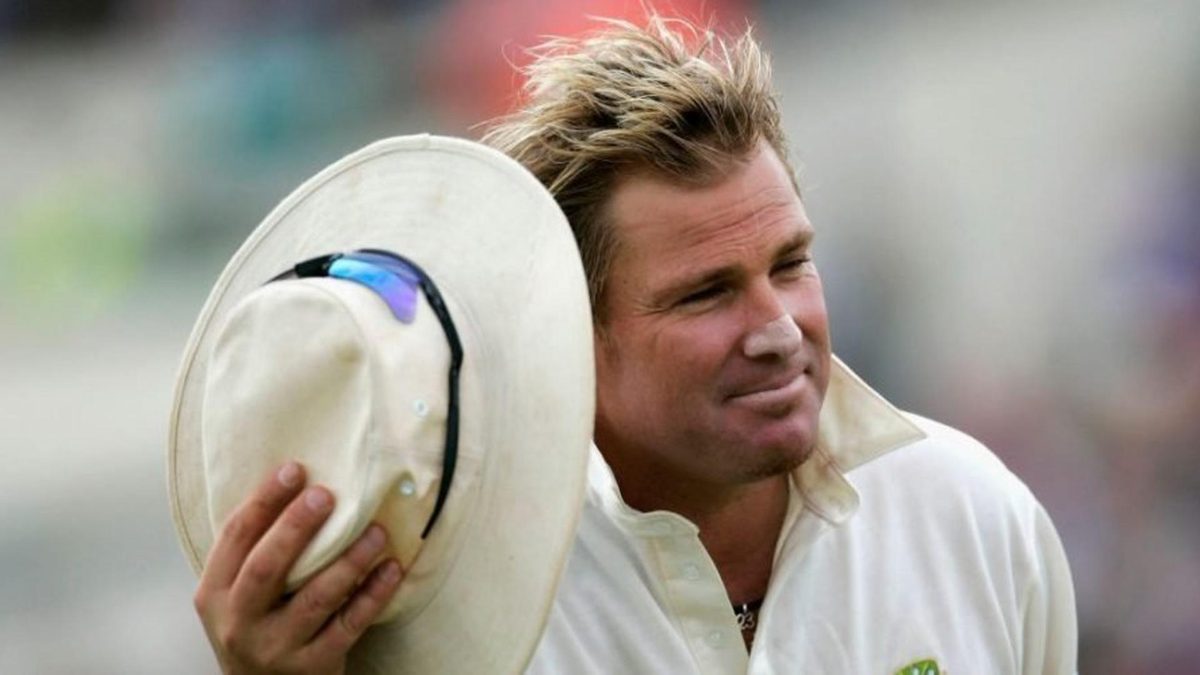
‘It wasn’t long before I was flicking an apple from right to left in front of the television’
In our series on the cricketers that got our writers hooked onto the game, Taha Hashim revisits his introduction to Shane Warne.
There were a number of candidates that interviewed for this position. Shahid Afridi’s anti-Boycott approach was glorious to the eyes of someone yet to understand the nuances. ‘Hulk, smash!’ every ball – what eight-year-old isn’t loving that? With Shoaib Akhtar, the same childlike principles applied. He ran in as fast as he could and bowled quicker than anyone else in the world. Kids don’t care for line and length; they just want to be faster than their mates. They also love magic, which explains why Shane Warne lands the gig.
Like so many others, I’m a product of the 2005 Ashes, the greatest series of them all and my gateway to Warne’s outlandish talents. His off-field desires of living it large weren’t to register with me just yet, but one look at him behind the umpire told me he was less cricketer, more stage actor.
The stare down the wicket as he flicked the ball from hand to hand, the ring finger – war-weary from 13 years of Test cricket – still requiring some practice rips before the real show. It wasn’t long before I was flicking an apple from right to left in front of the television.
The patient stroll to the crease: seconds for the viewer, a lifetime for the batsman Warne had narrowed his focus upon over the course of the previous few overs. How could something this slow provoke so much fear?
The regal push forward of his left hand, the fingers opening wide to brush the air down, a high five to torment the poor sod stood at the other end. An action as gorgeous as it was dangerous.
And then that wicked release, that snap to send the seam spinning anti-clockwise till before time. The revolutions adding that late floaty drift, because the game had to be played out above the eyeline, as well as off the pitch. Misdirection like a Christopher Nolan picture.
But the most enjoyment came from the gentle kiss of the turf, with the ball spitting away violently. Naturally, the delivery that stands out is the one at Edgbaston, where Andrew Strauss’s front foot is almost out of the West Midlands when the ball thunders into middle and leg from around the wicket, the side-spin marrying up seamlessly with the rough. Michael Slater’s ‘How about that!’ and chuckle remains an underrated piece of commentary, marvelling boyishly at Warne’s latest curation. Just like we all did.
Warne and that summer put a ball in my hand and dragged me to the nets. I read more about the game, too, learning that this mythical figure was 35 at the time, with shoulder and finger operations behind him. Had I not even seen the best of him? YouTube cured my FOMO and helped me take in the greatest hits, from the Gatting ball to the Gibbs bail-trimmer in the ’99 World Cup semi – a leg-break with as much will imparted on it as spin. I made a habit of rewatching a Warne tutorial video in which he talked through his variations, shamelessly breaking the magician’s code. Unfortunately, what that clip didn’t teach me was how to stop my loopy leggies from hitting the top of the net.
Fortunately, my own ineptitude has only increased my appreciation for the most difficult art in the game. Anyone willing to turn their wrist over in an attempt to deceive a batter with flight and turn – while putting themselves at risk of horrid embarrassment if the long hops and full tosses take over – is in my good books. And they’ll all do it with Warne both inspiring and haunting them because no-one will ever come close.








